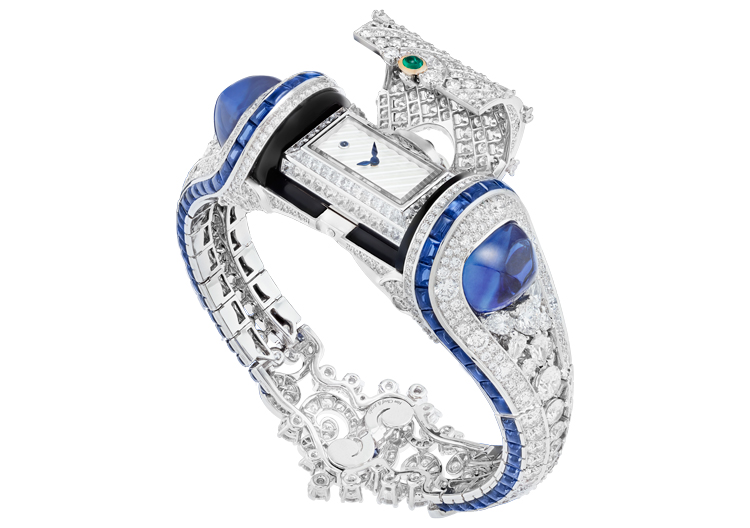While the rest of the industry looks at sales, Van Cleef & Arpels pushes for creativity and going beyond expectations.
Amid a slowdown in the luxury retail market, Van Cleef & Arpels remains focused on delivering extraordinary pieces that stand the test of time. Years of development and promotion are spent creating unique jewellery and watches that distinguish the brand from their many competitors. Behind this dream world is Nicolas Bos, Van Cleef & Arpels President and CEO, who faces the challenges of today’s luxury climate head on, and strives to keep the fascination with this world alive.

Born in December 1971 in Paris, Bos was an only child in a traditional French middle-class family. After business school, his strong interests in literature and culture lead him to an internship at Fondation Cartier pour l’Art Contemporain, where he spent eight years communicating with curators and artists, together with being involved in the numerous exhibitions they organised. In 2000, Bos was approached by Van Cleef & Arpels to join as Marketing Director, and 13 years later he became the CEO at only 42. Neither a jeweller nor a designer, his job is to initiate creative projects and ensure that they generate revenue and keep Van Cleef & Arpels on its own path.

Here we speak with Nicolas Bos, to find out exactly how you keep the balance of business and creativity.
Have you recently been finding it a challenging time for the watch industry?
We certainly have been impacted to some extent, but less than our colleagues since we are primarily a jewellery house and our watch collection is different to many others. Our watches are on the edge of jewellery, and the clientele considers a watch more as a piece of jewellery. We also have a different distribution setting, we are a retail house so we don’t benefit from the impact of wholesale distribution.
What is the main message for Van Cleef & Arpels this year?
It’s a message of enchantment and creativity. This year we launched an extraordinary object, the Automate Fée Ondine, which is something that we have been working on for many years. It was a good symbol, as there has been a lot of discussion on the future of the industry and the production capacity, and there has also been a general negativity on luxury. The reveal was a reminder of why we do what we do, to create these magical pieces that are going to fascinate. We thought about the challenges of business but at the end of the day what is fascinating about that world of mechanical watches and jewellery is that nobody needs it, they can live without it, but it’s for the emotion and craftsmen challenging themselves.
What do you hope to achieve that you have not yet done at Van Cleef & Arpels?
We want to keep what we do relevant and exciting, we need to continue to build a level of understanding and fascination for this world. I would love to widen the audience to better know the type of universe that we are involved in. Therefore, we started a school in Paris and we work with museums and institutions to strengthen the interest for these activities.
When I started working in this company, one of my fears was that the interest in this world would disappear. However, we have come a long way and have exhibitions that drive wide audiences to look at pieces.

Luxury is an emotion, however where is luxury today?
I’m not sure there is a simple answer. We have aspirational luxury, where you aspire to a brand, not because they are different or unique, but because they represent a status, and then at the other end of the spectrum, there are unique pieces that people don’t care whether the brand is known. It’s a personal vision, between the object or the experience, and I feel it is a combination of the two, so we aim to fulfil both expectations.
What milestones will we see this year?
We had an exhibition in Kyoto which is a beautiful project which is a dialogue between the art of high jewellery with arts and crafts of Japan. It is one of countries where there is a mix of tradition and innovation, the museum wanted to create a parallel between Japanese ways of arts and crafts and western vision of high jewellery.

Can you share with us your personal motto?
Try not to compromise.
What are the three things you hate?
Craziness, opportunism, and violence.
What book are you reading?
Faulkner.
Can you describe your style?
Reserved.
How would you like to be remembered?
As a promoter of the arts.
What is your music taste?
It varies, from Schubert to Mettalica.
By Lara Mansour Sawaya















